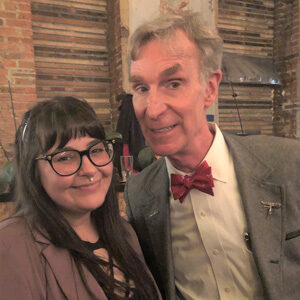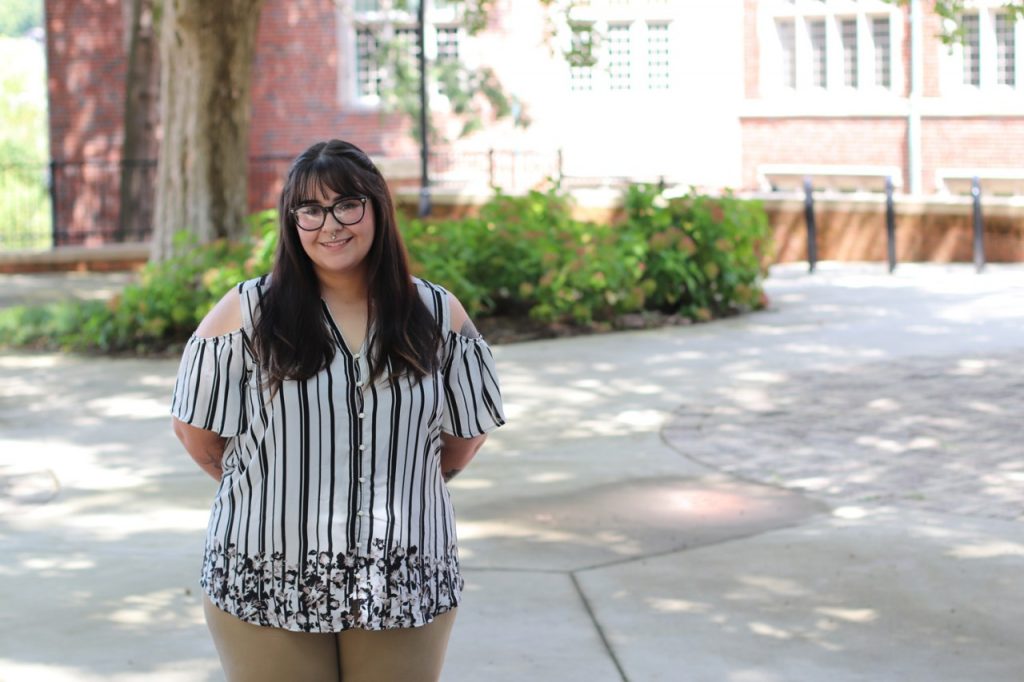UT Student Networks with Astronauts, Space Experts at International Meeting
Samantha Ramsey had an out-of-this-world experience last month when she attended the 70th International Astronautical Congress (IAC) in Washington, DC.
Ramsey, a first-generation college student and junior aerospace engineering major in UT’s Department of Mechanical, Aerospace, and Biomedical Engineering, was one of a handful of students selected by the national section of the American Institute of Aeronautics and Astronautics (AIAA) to attend IAC as a diversity scholar.
Hosted by AIAA, IAC brought together more than 6,500 people from 70 different countries to celebrate both the 50th anniversary of the Apollo 11 mission and the international accomplishments and partnerships that have become the hallmark of space exploration. This was the first time in almost 20 years IAC was held in the United States.
AIAA’s Diversity Scholars Program, sponsored by Aurora Flight Sciences and Boeing Company, provides opportunities for underrepresented university students pursuing an aerospace degree to attend an AIAA forum. The scholarship covered all costs associated with attending IAC and included invitations to special events held during the conference.
[Note: Ramsey will talk about her experience at IAC at UT’s AIAA chapter meeting at 6 p.m. on November 20 in the Min H. Kao Electrical Engineering and Computer Science Building, Room 622.]
Originally from Adams Run, a small town in South Carolina, Ramsey had to go to work after graduating from high school in order to support herself. After working for various nonprofits for eight years, she enrolled in college.
“Being a first-generation student and adult returning to college, on top of being a woman in engineering, can be extremely challenging,” said Ramsey. “Being selected as a diversity scholar felt almost like an affirmation that, although I may not look like a typical engineering student, I do belong here and that all of my hard work is paying off.”
As a diversity scholar, Ramsey was invited to breakfast with astronaut Frank Culbertson and lunch with astronaut Sandy Magnus. She met the CEOs and presidents of some of the biggest companies in the aerospace engineering industry, including Boeing and Lockheed Martin, and attended a private party for the Planetary Society, where she hung out with Bill Nye the Science Guy. She also shared a table at a diversity luncheon with former astronaut Buzz Aldrin, the second person to walk on the moon.

“Attending the IAC was truly a once-in-a-lifetime experience,” said Ramsey. “I was also able to connect with international industry leaders, professors at my top choices for graduate school, and even childhood heroes. I have come away completely overflowing with inspiration, and more excited than ever to continue my education.”
Ramsey plans to use the knowledge she gained at the conference in her undergrad research she’s doing with the trajectory team at NASA Marshall Space Flight Center under the direction of Stephanie TerMaath, the Jessie Zeanah Faculty Fellow in UT’s Tickle College of Engineering.
“Before attending IAC I had no idea how important it is to establish and maintain international relationships within the space community. But from the people I met, the things I learned, and the global technologies I was able to experience, I have gained a completely new understanding and appreciation for the work that is being done all around the world,” she said.
Although she’s only a junior, Ramsey joined the interplanetary trajectory senior design team this year and competed last week in the Vanderbilt Hackathon, building a virtual reality simulation of the Milky Way galaxy and mapping the stars and major constellations. The team won the “A Code of Art” category for creating the most beautiful and stylistically inspiring project.
This past summer she interned on the mission design and analysis branch of the trajectory team at NASA Marshall Space Flight Center, where she studied the celestial mechanics of the earth–moon system and built a program to help automate the process of determining launch windows for future Space Launch System missions. Ramsey hopes to continue interning there until she graduates.
Ramsey isn’t sure what the future holds, but she aspires to attend graduate school, receive a doctorate in astrodynamics, and possibly study space law. One thing is for certain: she wants to continue being a role model for diversity in engineering, something she’s very passionate about.
No matter where she ends up, she wants to work in astrodynamics and orbital mechanics and hopefully help calculate the trajectories for future deep space exploration missions.
Contact:
Kathy Williams (865-974-8615, williamk@utk.edu)
